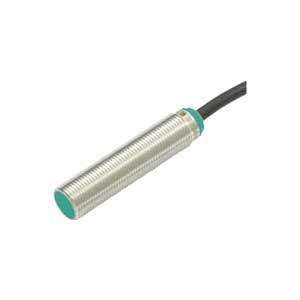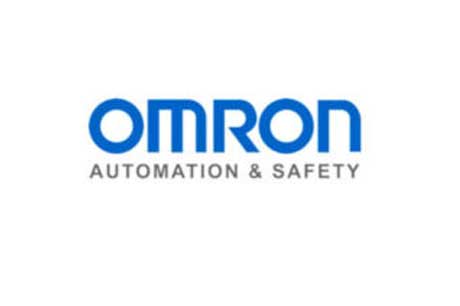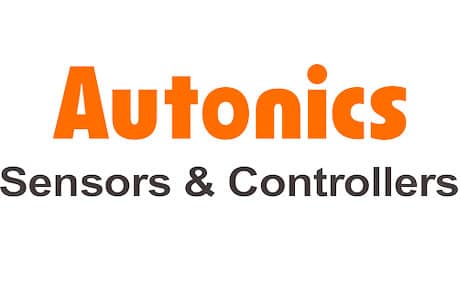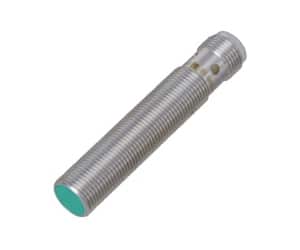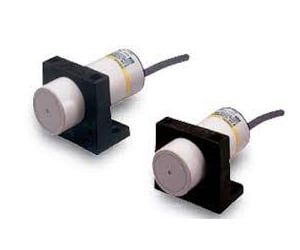Proximity Sensor
Welcome to IndMALL Automation! Are you in search of high-quality proximity sensors for your industrial automation needs? Look no further than IndMALL Automation.
We offer a wide range of proximity sensors, including inductive proximity sensors and capacitive proximity sensors, to meet your industrial applications. Our proximity sensors are designed to provide precise and accurate detection in a variety of industrial environments, ensuring consistent and reliable performance.
What is Proximity Sensor?
A proximity sensor is a type of sensor that detects the presence of an object without requiring physical contact. When an object enters the sensor’s field of view, it detects the object using sound, light, infrared radiation, or electromagnetic fields, depending on the specific type of proximity sensor.
There are different types of proximity sensors, each of which detects targets in a different way. The most commonly used proximity sensors are the inductive proximity sensor and the capacitive proximity sensor. These sensors convert information about the presence or movement of an object into an electrical signal.
Types of Proximity Sensor
Let’s take a closer look at the different types of proximity sensors:
Inductive Proximity Sensors
Inductive proximity sensors are used to detect metal objects without any contact. They work on the principle of electromagnetic induction, where a coil is driven with an oscillator when a metallic object approaches it.
Inductive sensors have two versions: unshielded and shielded. Unshielded versions have a wider and greater sensing distance, while shielded versions concentrate the electromagnetic field in the front and cover up the sides of the sensor coil.
Advantages of Inductive Proximity Sensors:
- Contactless detection
- Adaptability to environments; resistant to common conditions seen in industrial areas such as dust and dirt
- Capable and versatile in metal sensing
- Considerably cheap when it comes to price
Disadvantages of Inductive Proximity Sensors:
- Limited detection range, averaging a maximum range of up to 50mm
- Can only detect metal objects
- Performance can be affected by external conditions such as extreme temperatures, cutting fluids, or chemicals
Capacitive Proximity Sensors
Capacitive proximity sensors are non-contact sensors that can detect both metallic and non-metallic objects, including liquids, powders, and granular materials. They operate by detecting a change in capacitance.
Similar to inductive sensors, capacitive sensors consist of an oscillator, Schmitt trigger, and output switching circuit. However, capacitive sensors have two charging plates: one internal and one external.
The internal plate is connected to the oscillator while the external plate, also known as the sensor electrodes, is used as the sensing surface. When an object approaches the sensing area, the capacitance of both plates increases, resulting in an oscillator amplitude gain. This amplitude gain triggers the sensor output switch.
Advantages of Capacitive Proximity Sensors:
- Non-contact detection
- Capable of detecting a wide range of materials, including non-metallic objects such as liquids and powders
- Well-suited for use in industrial environments
Disadvantages of Capacitive Proximity Sensors:
- Relative low detection range, although still higher than inductive sensors
- Higher cost compared to inductive sensors.
Magnetic Proximity Sensors
Magnetic proximity sensors are designed to detect the presence of magnetic objects, such as permanent magnets, without contact. Despite their small size, they can operate over long sensing ranges and can detect magnets through a variety of materials, including non-ferrous metals, stainless steel, aluminum, plastic, and wood.
These sensors work by triggering a switching process when the target, which is characterized by its magnetic field, enters the detection range of the sensor. The switch may use a reed switch or operate according to inductive, variable reluctance, magneto-resistive, or Hall Effect principles, and will send an alert to a microprocessor or other computational unit.
Advantages of Magnetic Proximity Sensors:
- Non-contact detection
- Long sensing ranges of up to ~70 mm
- Ability to detect permanent magnets through various materials
- No moving parts, resulting in longer service life
- Robust and maintenance-free
- Can operate in high-temperature environments
- Suitable for use in harsh environments that may be affected by dust, heat, or vibrations.
Features of Proximity Sensors
Contactless detection: Proximity Sensors are able to detect the presence of an object without physical contact, which prevents damage or abrasion to the object. In contrast, to limit switches, Proximity Sensors use electrical signals to detect objects.
Longer service life: Proximity Sensors use semiconductor outputs, which means that there are no contacts to wear out, resulting in longer service life. The only exception is for sensors that use magnets.
Suitable for harsh environments: Unlike optical detection methods, Proximity Sensors are suitable for use in harsh environments where water, oil, or other contaminants are present. They are highly resistant to dirt, oil, and water, and some models even have fluoro resin cases for excellent chemical resistance.
High-speed response: Proximity Sensors provide a high-speed response, making them faster than switches that require physical contact.
Wide temperature range: Proximity Sensors can be used in a wide range of temperatures, ranging from -40 to 200°C.
Two-wire Sensors: Some Proximity Sensors have a combined power and signal line. It is crucial to insert a load, or internal elements may be damaged. Refer to the Precautions for Safe Use in the Safety Precautions for All Proximity Sensors for more information.
Classification of Inductive Sensor
Proximity sensors can be classified according to different criteria, including their working principles, operating principles, detection methods, and structure types.
Working principles classification: Proximity sensors can be classified based on their working principles. Examples include a high-frequency oscillation type, a capacitive type, an induction bridge type, a permanent magnet type, and a Hall effect type.
Operating principles: Proximity sensors can be categorized according to their operating principles, which include high-frequency oscillation utilizing electromagnetic induction, magnetic type using magnets, and capacitive type using capacitance change.
Detection method classification: Proximity sensors can be classified based on their detection method. There are universal types that mainly detect ferrous metals (iron), all metal types that can detect any metal within the same detection distance, and non-ferrous metal types that mainly detect non-ferrous metals such as aluminum.
Structure type classification: Proximity sensors can also be classified according to their structure type. Two common types are the two-wire proximity sensor, which is simple to install and connect, and the DC three-wire type. DC three-wire proximity sensors, it has two output types: NPN and PNP. The output form should be chosen based on the control circuit’s properties in real applications.
Elements to Consider When Selecting Proximity Sensors
In order to achieve a high-performance ratio in a proximity sensor system, different types of sensors should be chosen for detecting various materials and distances. Here are some principles to follow when selecting the right type of sensor:
For detecting metal objects such as iron-nickel and A3 steel, high-frequency oscillation-type proximity sensors should be used as they are the most sensitive. However, the detection sensitivity of aluminum, brass and stainless steel detector bodies is low.
When detecting non-metallic materials like wood, paper, plastic, glass, or water, capacitive proximity sensors should be worked. Optoelectronic proximity sensors or ultrasonic proximity sensors should be used for detecting and controlling metal and non-metal objects from a distance.
For detecting metal objects with low sensitivity requirements, a low-cost magnetic proximity sensor or a Hall-type proximity sensor can be used.
Here are some elements to consider when selecting a proximity sensor:
- Detection type: built-in amplifier or separate amplifier.
- Shape: round, square, or groove type.
- Detection distance: in millimeters.
- Detection objects: iron, steel, copper, aluminum, plastic, water, paper, etc.
- Working power supply: DC, AC, or AC and DC universal.
- Output form: normally open (NO) or normally closed (NC).
- Output mode: two-wire or three-wire (NPN, PNP).
- Shielded and unshielded.
- Lead-out type, connector type, or connector relay type.
- Response frequency: how many objects can be detected in one second.

